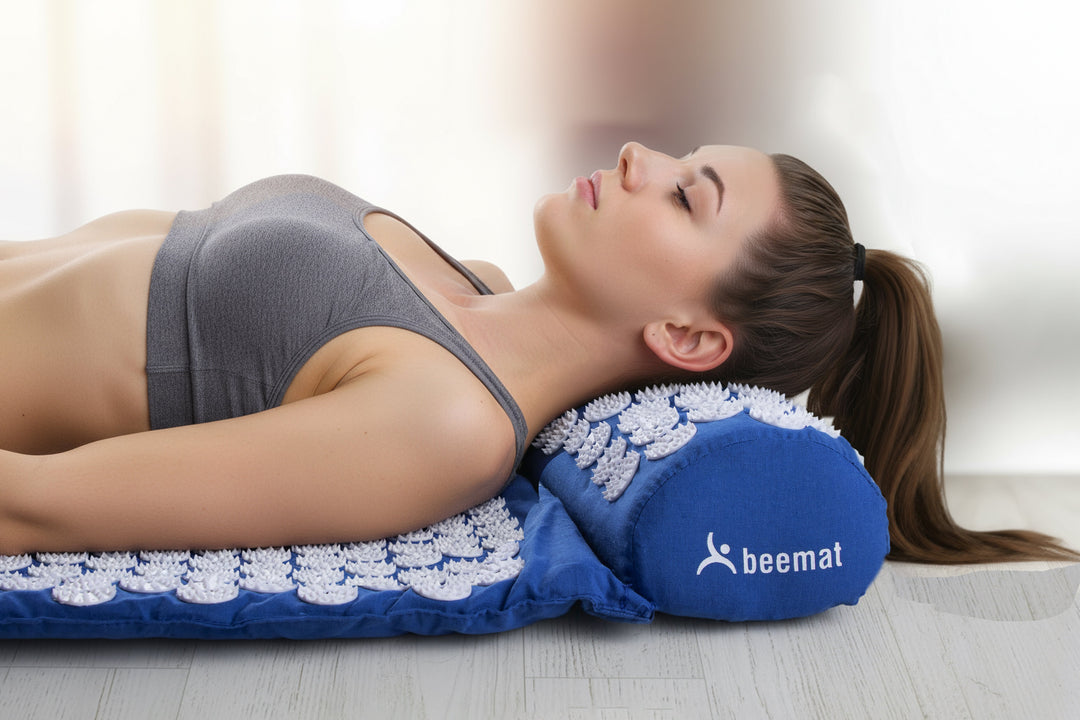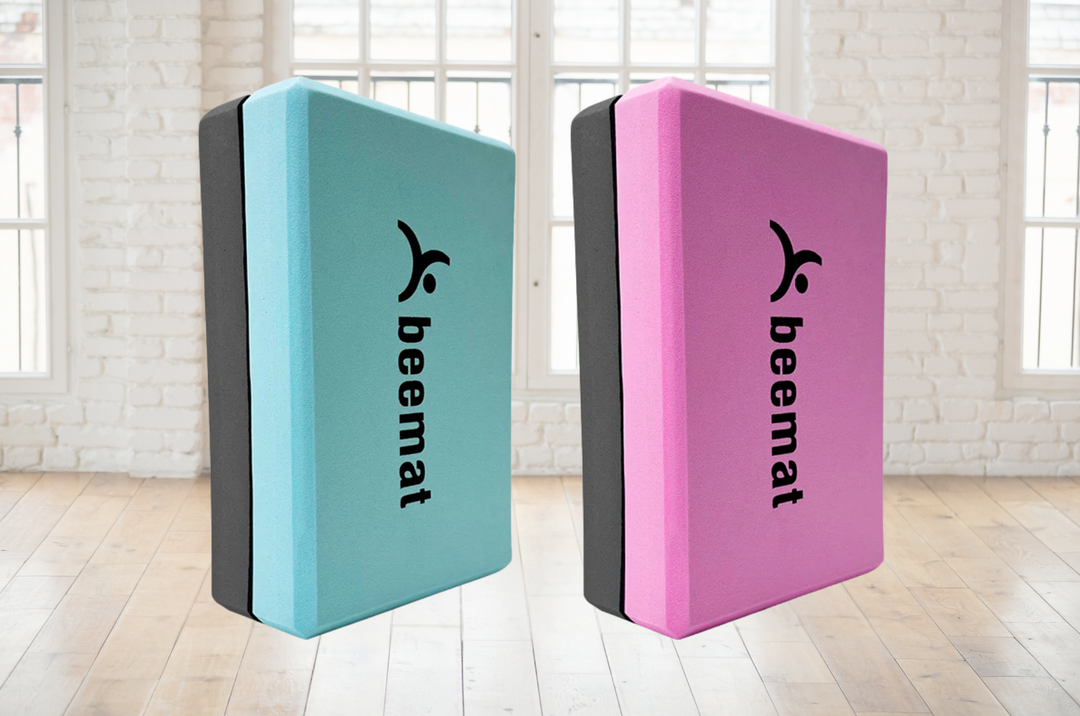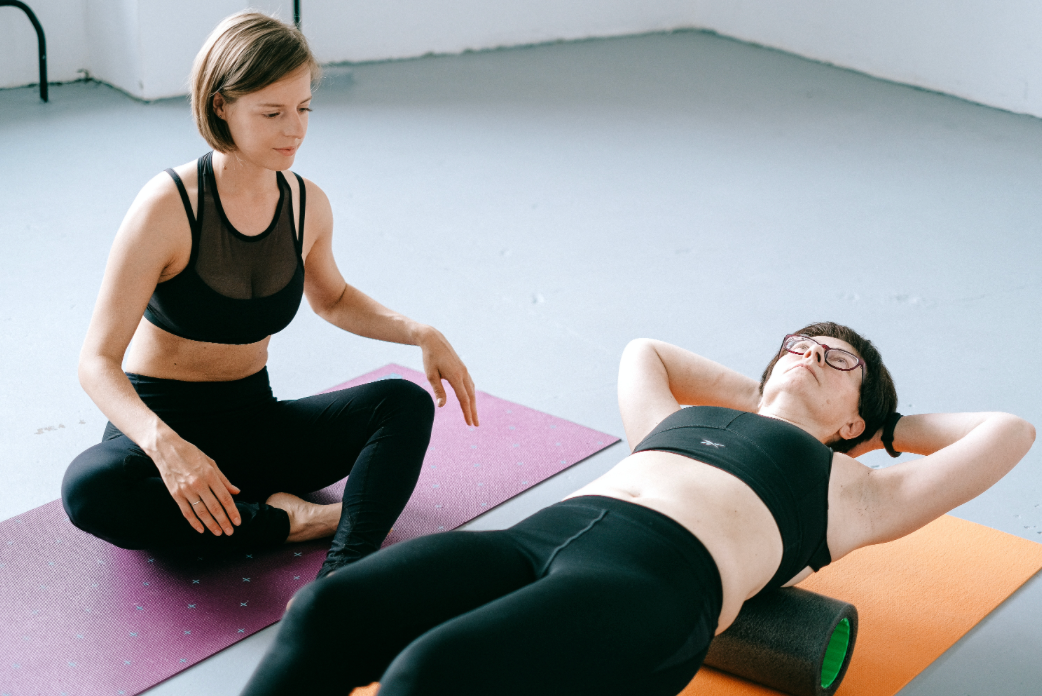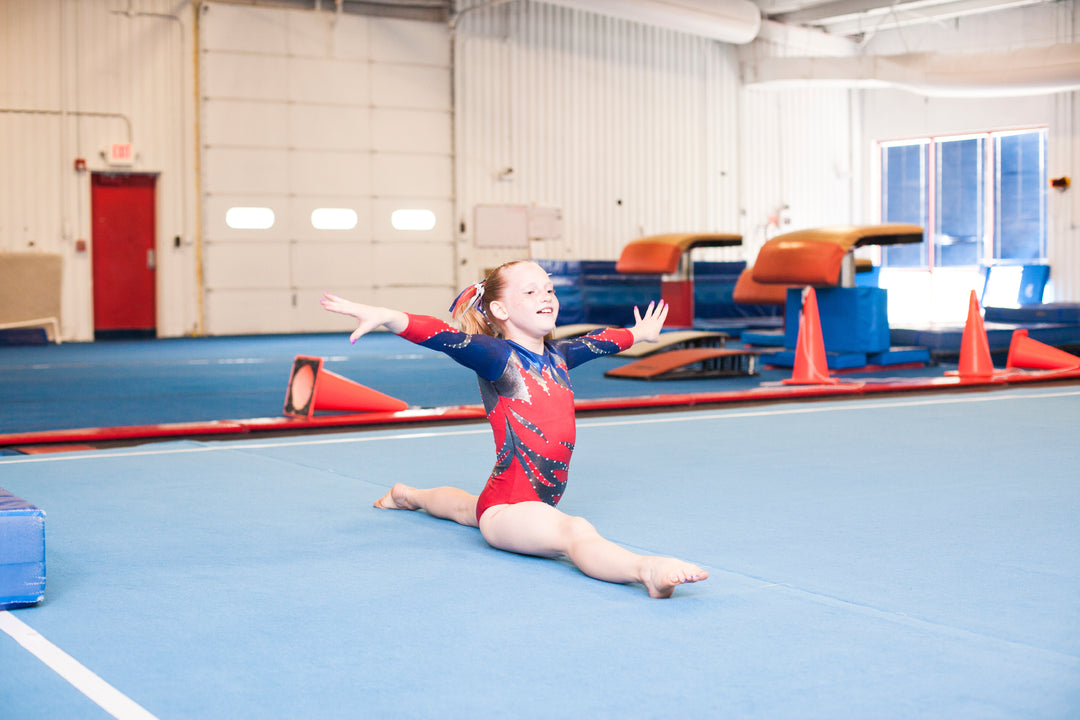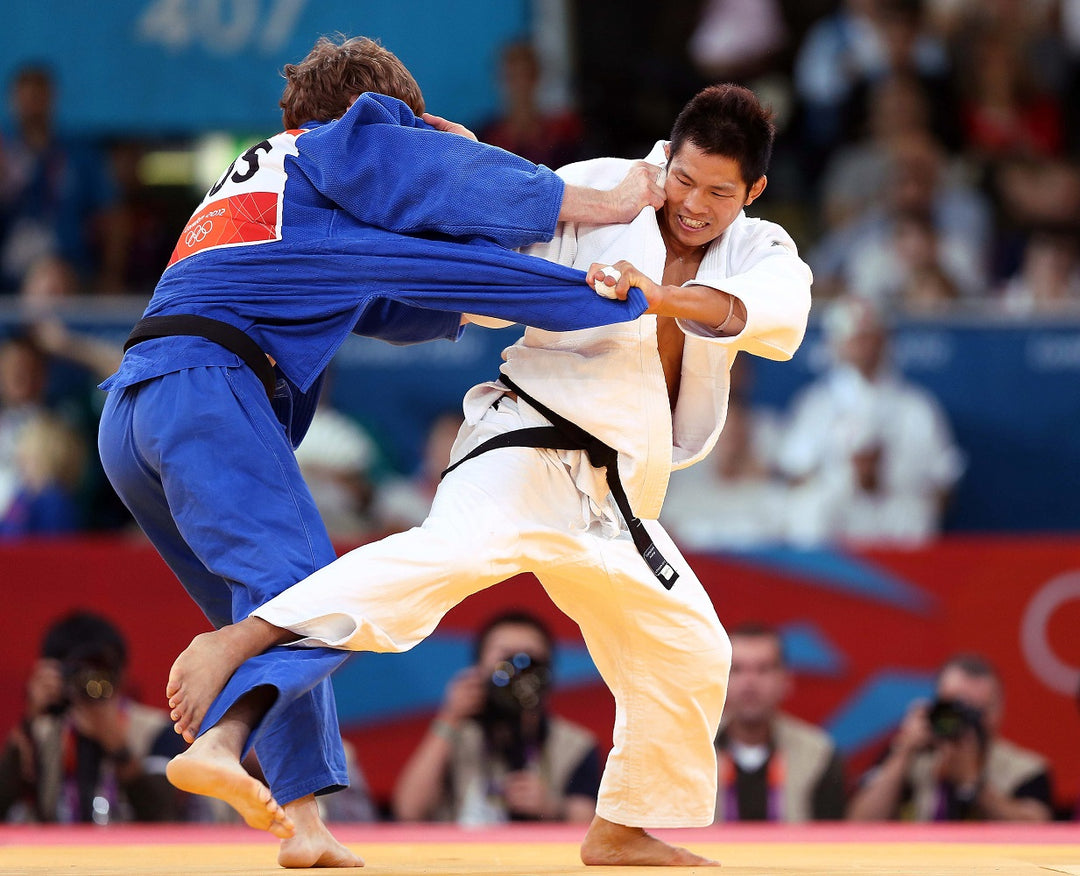The Best Yoga Mats for Beginners
A yoga mat is an essential piece of equipment for anyone who wants to practice yoga. It provides traction and cushioning, which can help you stay safe and comfortable during your practice. So consider investing in your yoga mat. There are a lot of different yoga mats on the market these days. So, how do you know which one is right for you?
In this blog post, we will take a look at three of our different types of yoga mats: the Beemat studio yoga mat, the Beemat cork yoga mat, and the Beemat eco TPE yoga mat. Each of these mats has its unique benefits, so it’s important to understand what each one offers before making a purchase.
Why a Good Yoga Mat Matters for Beginners
The role of a good yoga mat in a beginner's journey cannot be overstated. When embarking on your yoga journey, a quality mat can make all the difference in ensuring comfort, safety, and effective practice. Comfort is key when practicing yoga, as it allows you to focus on your breathing and alignment without being distracted by discomfort from a hard or uneven surface. A good yoga mat provides the necessary cushioning for your body, protecting your knees, elbows, and other joints during various poses. Safety is another crucial aspect. A mat with the right texture and stickiness prevents slipping and sliding, even when things get a little sweaty, helping you avoid unnecessary injuries. Lastly, an effective practice requires consistency. A beginner will find it much easier to stick to their yoga routine if they have a durable, easy-to-clean mat that they enjoy using. Thus, investing in a good yoga mat is not just about buying a piece of equipment—it's about setting yourself up for a successful and enjoyable yoga journey.
When choosing the perfect yoga mat for beginners, there are several key factors to consider:
1. Material: Yoga mats can be made from various materials, including PVC, rubber, cotton, jute, and more eco-friendly options like cork. Each material has its advantages and disadvantages. For instance, PVC mats are often more durable and provide excellent grip, but they're not biodegradable. On the other hand, cork mats are eco-friendly and offer good traction, but they might not last as long.
2. Thickness: The thickness of your yoga mat can greatly affect comfort. Standard yoga mats are about 1/8 inch thick, providing a solid balance between comfort and stability. Thicker mats, around 1/4 inch, can offer more cushion for sensitive joints but might make balancing poses more challenging. Thinner mats (1/16 inch) are more portable but offer less padding.
3. Texture: Texture affects how much traction a mat provides. A physically textured mat can help prevent slipping and sliding, even when you sweat. Some people might prefer a smoother mat, so it's important to find a texture that feels good under your hands and feet.
Beginner's Guide to Choosing the Perfect Yoga Mat
Studio yoga mats are thicker and more durable than other types of yoga mats. They are designed to provide more cushioning and support, making them ideal for use in a studio setting. Studio yoga mats are also typically wider and longer than other mats, providing more coverage and space for poses.
Cork yoga mats are made of natural cork material, which makes them sustainable and eco-friendly. Cork is a renewable resource and biodegradable, so you can feel good about using a cork yoga mat. Cork is also a soft material, making it comfortable to use for extended periods. It also has some cushioning properties, which can be helpful if you are new to yoga or if you have sensitive joints.
TPE yoga mats are made of thermoplastic elastomer, a synthetic rubber material. This makes TPE yoga mats durable and long-lasting. They are also easy to clean and maintain, which is important if you are going to be using your mat often. TPE is a flexible material, which makes it comfortable to use and easy to fold up for storage.
So, which yoga mat is right for you? That depends on your needs and preferences. If you are looking for a durable, thick yoga mat that will provide extra cushioning and support, then the Beemat Studio Yoga Mat is a good option. If you are looking for an eco-friendly yoga mat made of natural materials, then the Beemat Cork Yoga Mat is a good choice. And if you are looking for a flexible, easy-to-clean yoga mat with long-lasting durability, the Beemat ECO TPE Yoga Mat is a great option.
Yoga Accessories
Yoga accessories are highly beneficial, particularly for those just beginning their yoga journey. They can enhance your practice by helping you ease into poses and maintain them for longer periods. Yoga blocks, for instance, can be strategically placed against a wall to provide support and stability, enabling you to hold poses longer and deepen your stretches. This not only enhances your flexibility but also improves your strength and endurance. Similarly, a yoga wheel is a versatile tool that can significantly improve your flexibility, balance, and strength. It can be used in various ways, such as supporting your back in a heart-opening pose or assisting in challenging balance poses. Lastly, yoga straps offer another level of flexibility training. You can loop them around a post or door handle to aid in stretching exercises or to support certain poses. These accessories, when used properly, can truly enrich your yoga practice, making it more effective and enjoyable.
How to Take Care of Your Yoga Mat
Properly maintaining your yoga mat is crucial for both hygiene and durability. Regular usage can lead to the accumulation of sweat, oils, and dirt, which not only makes the mat unclean but can also degrade its material over time. Cleaning your mat regularly helps eliminate bacteria, keeps it fresh, and extends its lifespan. Most mats can be cleaned with a simple mixture of warm water and mild soap. After washing, be sure to rinse thoroughly to remove any soap residue, as this can make the mat slippery. Then, let it air dry completely before rolling it up to prevent mold and mildew.
Storage is another important aspect of yoga mat maintenance. Keep your mat in a cool, dry place away from direct sunlight, as excessive heat and UV rays can cause the mat to break down over time. Rolling up your mat with the top side (the side you practice on) facing outwards can help maintain its flatness and prevent curling edges.
Additionally, avoid using shoes on your mat or placing heavy objects on it for extended periods, as these can damage the surface and affect the mat's cushioning properties. By taking proper care of your yoga mat, you ensure a comfortable and safe practice for years to come.
Overall, investing in a high-quality mat is a critical decision for anyone about to embark on their yoga journey. Firstly, a quality yoga mat enhances the overall yoga practice experience, it provides a comfortable and personal space for you to practice and can significantly impact your performance.
Secondly, a good yoga mat is crucial for injury prevention. A low-quality mat may create an accident-prone environment, leading to potential injuries. Whereas a high-quality mat provides the necessary support and cushioning.
In conclusion, investing in a high-quality yoga mat that suits your needs is an important step in your yoga journey. It not only enhances your practice experience but also ensures your safety and well-being. So, take the time to research, try out different options, and find the right mat for you.



